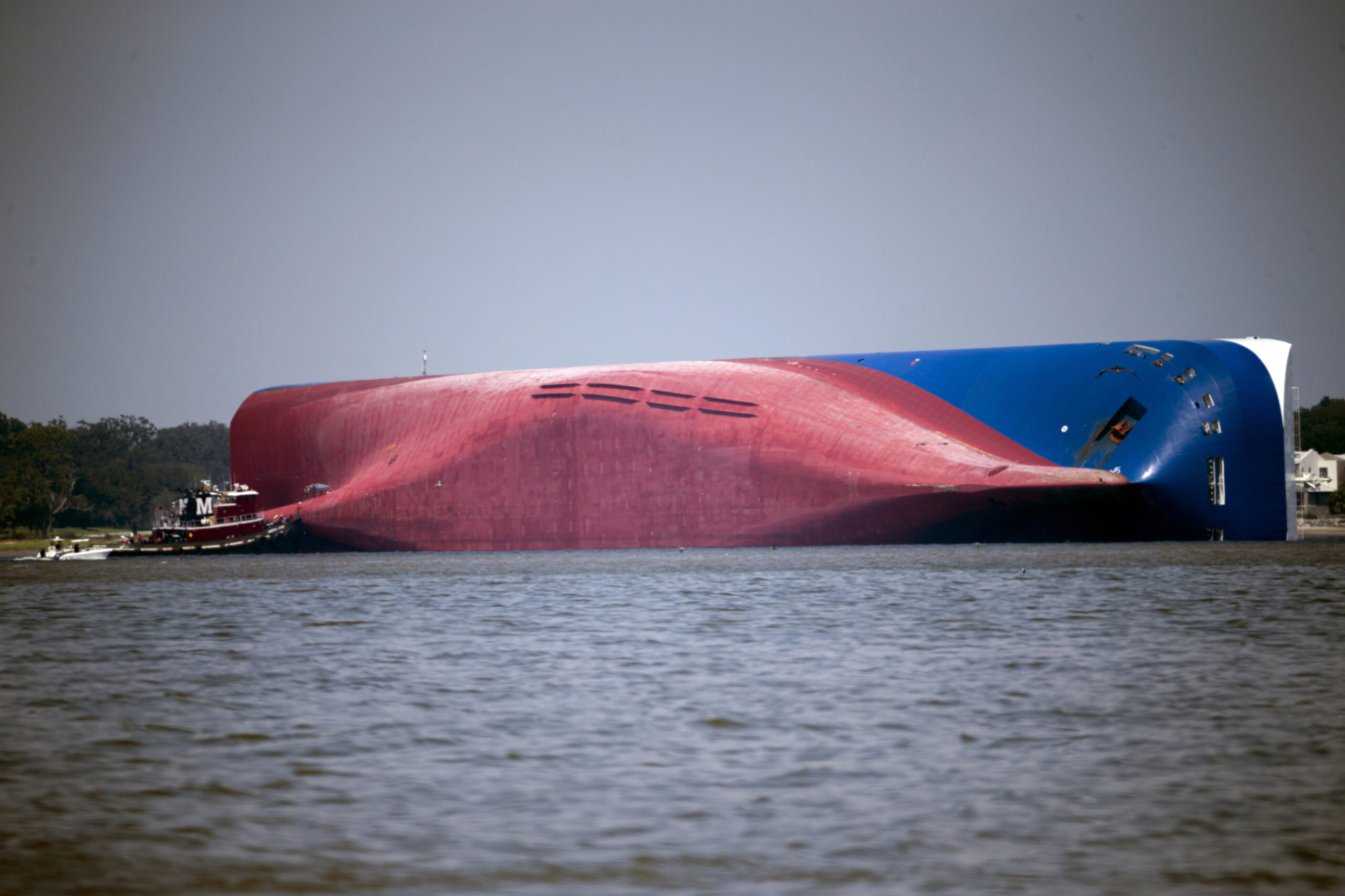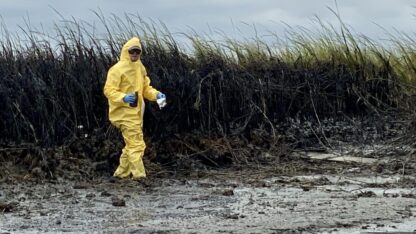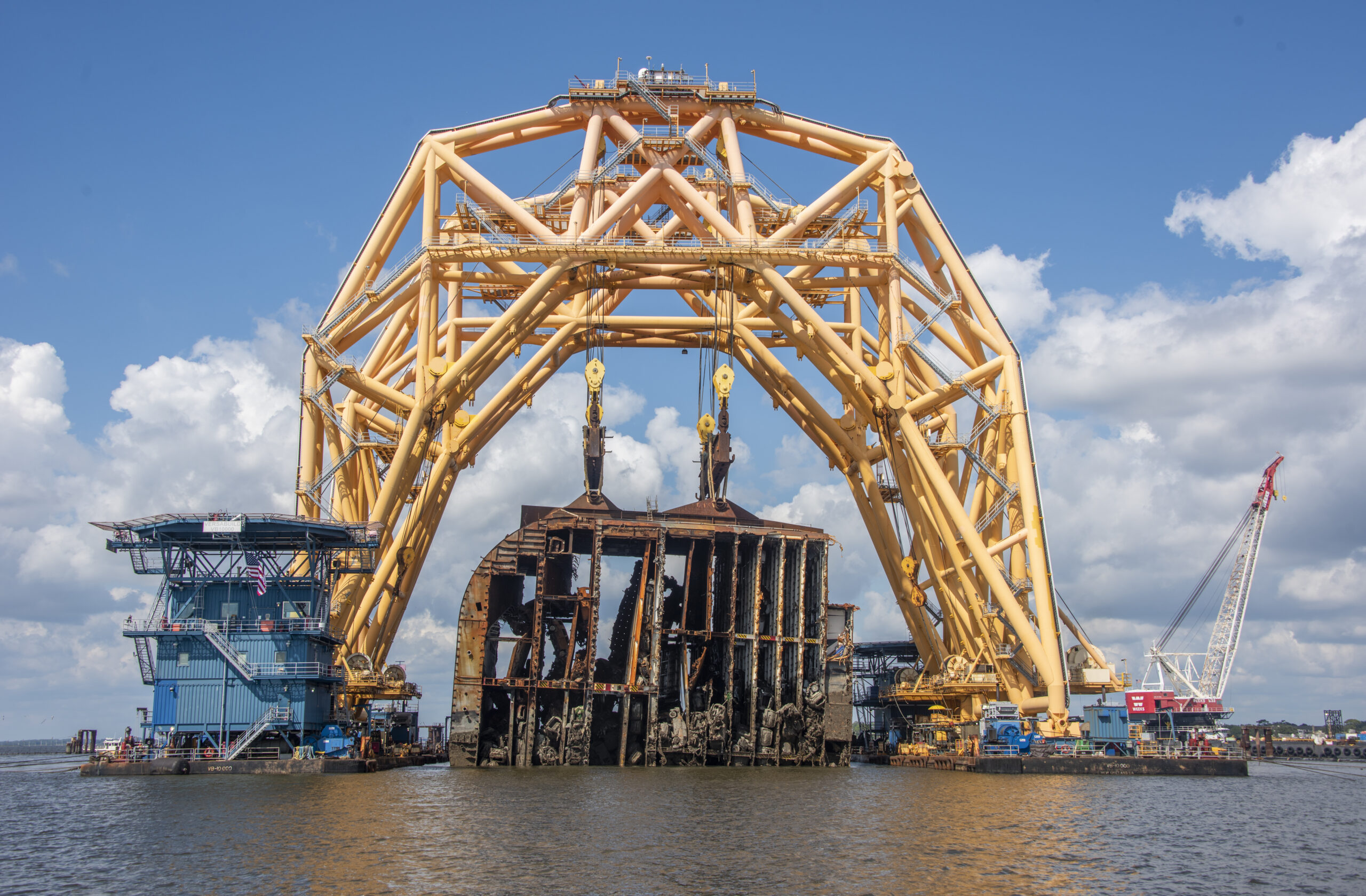Fishermen, shrimpers and business owners dependent on coastal tourism have filed lawsuits over pollution caused when a cargo ship capsized off the Georgia coast in 2019.
The two federal lawsuits filed last week in Georgia say the pollutants released by the capsize of the Golden Ray and the harm caused by the subsequent salvage operation have damaged the area’s sensitive marine ecosystem — and the plaintiffs’ livelihoods.
The South Korean-owned Golden Ray capsized with more than 4,200 automobiles in its cargo decks shortly after departing the Port of Brunswick on Sept. 8, 2019. The wreck occurred in the sound between St. Simons and Jekyll Islands. Removal dragged on for more than two years.
The lawsuits accuse the companies connected to the shipwreck of negligence and of violating the federal Clean Water Act and the federal Oil Pollution Act, which was enacted in 1990 following the Exxon Valdez disaster. Plaintiffs are asking the court to order the companies to pay civil penalties, remediate the sound and award compensatory damages.
“The Golden Ray was grounded near environmentally sensitive areas that serve as a unique habitat for a variety of species, including, but not limited to, shrimp, fish, migratory birds, crabs, and food sources for all marine life, including, but not limited to, fiddler crabs,” the lawsuits stated.








